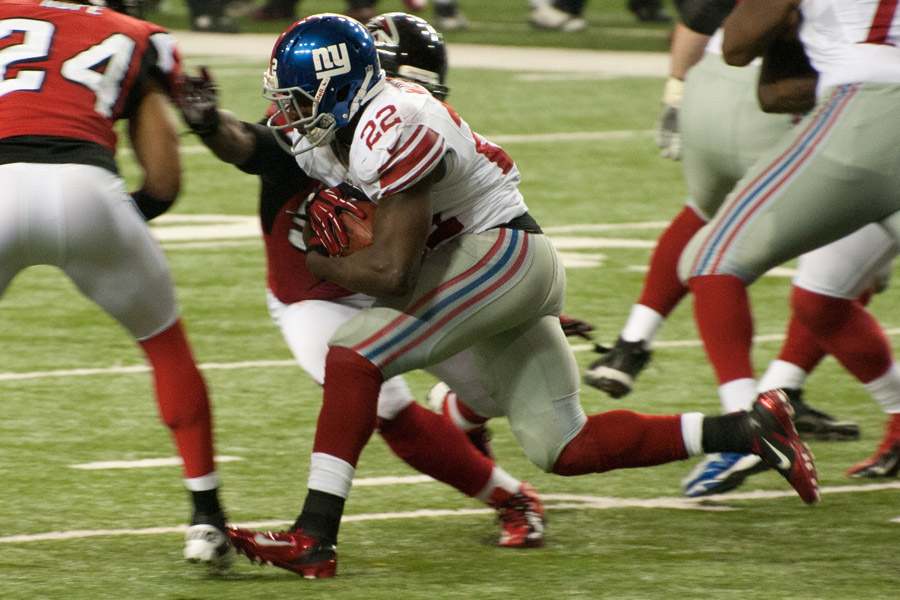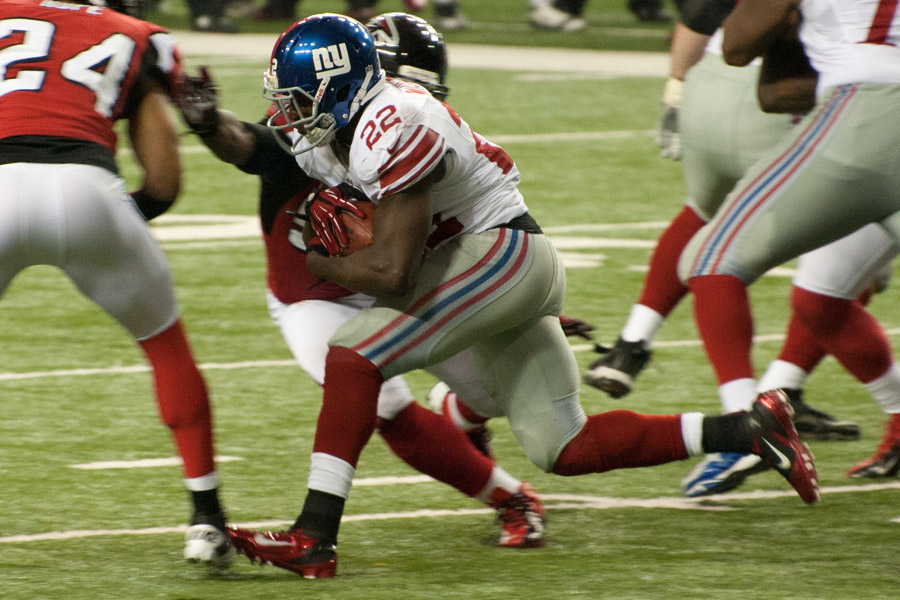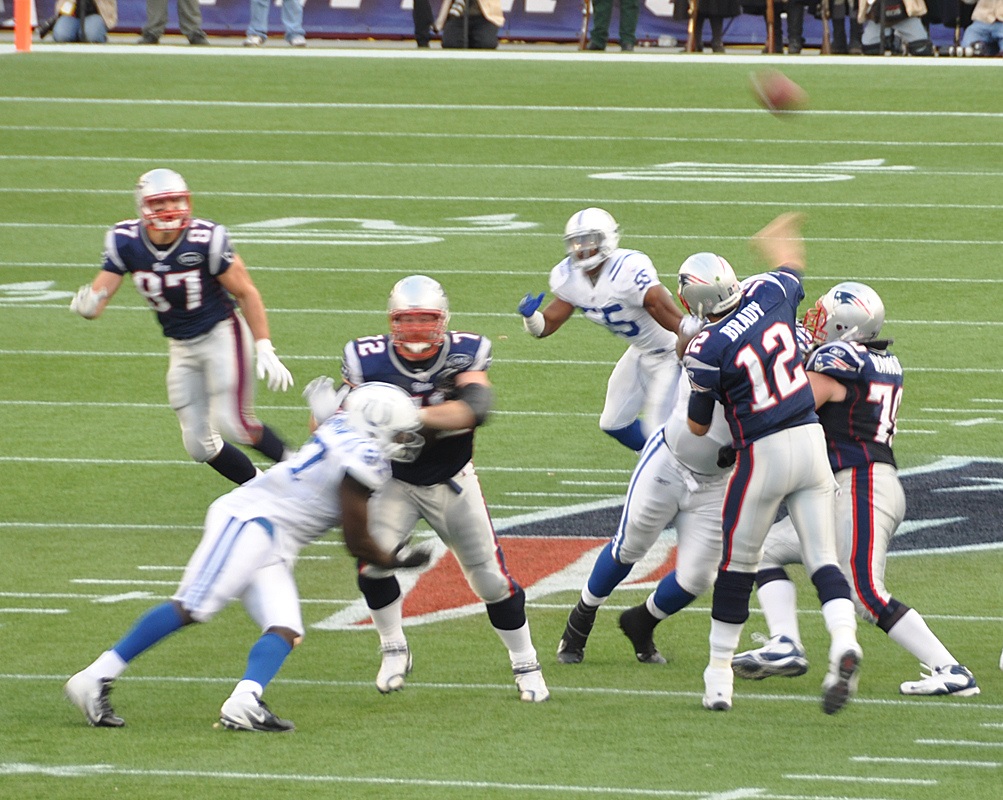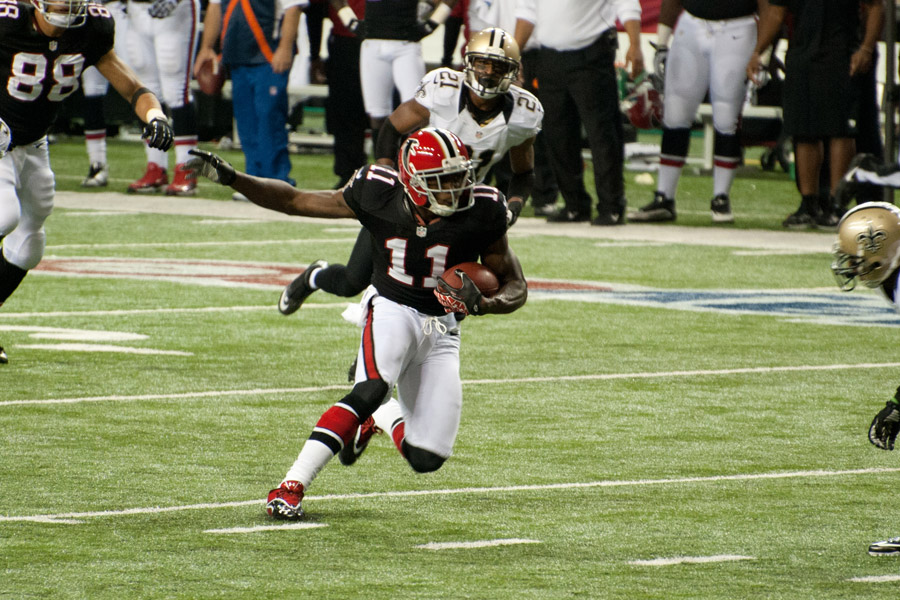
Venric Mark: Offensive Weapon?
by Matt Waldman
A couple of months ago, an employee from an NFL![]() player-personnel department asked for preliminary input on a project he’s undertaking. He asked me to relay things I watch when I study offensive skill players that he could quantify. One of the things I shared pertains to running backs.
player-personnel department asked for preliminary input on a project he’s undertaking. He asked me to relay things I watch when I study offensive skill players that he could quantify. One of the things I shared pertains to running backs.
What many quality pros at the position have in common is how they handle backfield penetration. Every runner looks effective when he can generate momentum towards an open crease, however it requires a strong integration of multiple skill sets to foil early defensive penetration.
These skills include anticipating the penetration during the exchange with the quarterback![]() , avoiding the defense after the exchange, and the runner redirecting his path to minimize a potential loss after the defense disrupts the intent of the offensive play. I see this happen most when a defense is dominating an offensive line and limiting the runner’s box score production.
, avoiding the defense after the exchange, and the runner redirecting his path to minimize a potential loss after the defense disrupts the intent of the offensive play. I see this happen most when a defense is dominating an offensive line and limiting the runner’s box score production.
Some the most memorable evaluations I have performed on prospects have been runners during games where their teams were overmatched:
- Marshall’s Ahmad Bradshaw versus a Top-10 worthy Tennessee defense.
- Tulane’s Matt Forte against LSU’s top-ranked defense.
- LSU’s Joseph Addai facing a top-ranked Auburn defense.
All three players performed poorly according to the box score data in these games, but what I saw them do on the field was impressive. Season-long production may demonstrate that the player is contributing to the team, but it’s one of the most overrated aspects of evaluating a prospect.
However, there is an added layer of complexity that comes into play when a prospect has the talent to produce in the NFL, but he plays a position in college football![]() where his physical dimensions don’t match the NFL’s traditional prototype.
where his physical dimensions don’t match the NFL’s traditional prototype.
Underscoring this challenge is the NFL embracing the latest offensive concepts that are successful in the college game. The more a team spreads the field, opts for read-option plays, and uses a multiple scheme, the more likely the team will be scouting players who were successful in these schemes. The problem is that, by traditional NFL standards, those players aren’t big enough to ride the pro rollercoaster.
When this happens, we often see these players earn vague position titles from coaches like utility back or offensive weapon. There are exceptions, but the vaguer the position title, the less likely the player will have a defined role and impact in the offense. It’s why this integration of skills to anticipate-avoid-redirect may not be as enlightening to scouts when they watch a smaller runner back.
These players are also a test of an organization’s overall vision. A personnel department can scout a player and determine he’s a worthwhile prospect, but if the organization isn’t aligned in its thinking, the coaching staff can miscast its young talent into an offensive design that doesn’t suit his skills.
Nothing like shopping for groceries to provide the chef all the ingredients for a fantastic Italian meal only to see him use these goods for a Mexican dinner.
Darren Sproles, Dexter McCluster, and Tavon Austin all fit that player type. McCluster was more Sproles-like in style![]() when he joined the Chiefs, but the team had its share of running back talent. They converted the Ole Miss star into a full-time wide receiver and he has yet to make a real impact. Place McCluster in a system similar to the Saints and I think he’d be a standout.
when he joined the Chiefs, but the team had its share of running back talent. They converted the Ole Miss star into a full-time wide receiver and he has yet to make a real impact. Place McCluster in a system similar to the Saints and I think he’d be a standout.
Even as new schemes create a need for players without a positional prototype, “offensive weapons” without a traditional position have been around for decades. Two players that come to mind –- and there are several before them -– are Warrick Dunn and Eric Metcalf.
Dunn’s physical dimensions are in the same range as the McCluster-Sproles-Austin trio, but he proved he could do the dirty work between the tackles as a true running back. In contrast, Metcalf was a bigger player than all four of these prospects, but Bill Belichick’s use of Metcalf at running back in Cleveland yielded mixed results. Some of this was due to an old-fashioned scheme; the rest was Metcalf’s style.
Metcalf’s production made him a mediocre running back in Cleveland, but he was a good receiver in the short zone of the field and a fine return specialist. When the Falcons acquired Metcalf, they converted him to a full-time receiver in a run-and-shoot offense. Metcalf had 104 catches, 1180 yards, and eight scores in his first season.
Scheme made all the difference. Pair Metcalf with Belichick in New England and I suspect the Patriots’ head coach would have used Metcalf more like Wes Welker or what I expect the team to do with a healthy![]() Shane Vereen this year.
Shane Vereen this year.
He’s a player whose draft stock will not just be determined by his skill and athleticism, but by the performance of players like McCluster and Austin. If both of these young NFL talents falter beyond their special teams prowess, Mark will have to demonstrate that he’s a Dunn-esque exception to the rule as a runner or display the receiving prowess in the intermediate zone to earn a definitive position title and role.
While Mark has a knack for minimizing losses, his display of this particular integrated skill set won’t likely hold the same value compared to the likes of Bradshaw, Forte, and Addai because of his current size. Depending on his physical growth, level of skill, and an NFL teams’ perception of his potential, Mark could either be viewed as a pure running back or labeled an “offensive weapon.”
Mark’s performance in last year’s opener at Syracuse provides a good showcase for his versatility, explosiveness, and vision — but it also raises more questions about his future than definitive answers.











